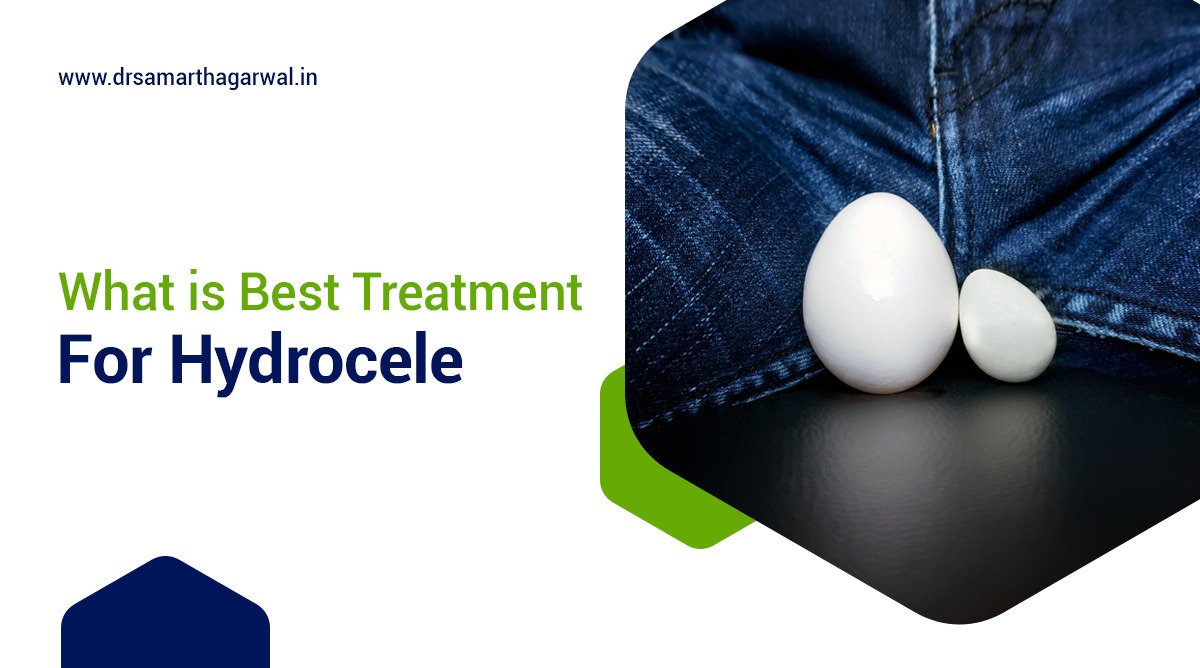Hydrocele treatment involves addressing the abnormal accumulation of fluid around the testicle, which can cause discomfort, pain, and embarrassment. The treatment approach depends on the underlying cause and severity of the condition.
The symptoms of hydrocele include a painless swelling in the scrotum, heaviness or discomfort in the scrotum, and a feeling of pressure or tenderness in the affected area. Hydrocele can be caused by a variety of factors, including injury, infection, or inflammation of the epididymis, a congenital defect, or a blockage in the lymphatic system.
In a 2010 paper published in PubMed, M. Cimador and colleagues emphasized that if hydrocele occurs after varicocelectomy, initial management include observation with or without hydrocele aspiration, and large persistent hydroceles are usually treated with surgical repair
Treatment options for hydrocele range from watchful waiting for mild cases to surgical repair for more severe cases. Other treatment approaches include sclerotherapy, which involves injecting a sclerosant into the hydrocele under ultrasound guidance. In some cases, surgery may be necessary to correct an underlying defect or remove the hydrocele.
What are the treatment options for a hydrocele?
Here are the main treatment options for a hydrocele and a brief description of each:
- Observation:
- For small, asymptomatic hydroceles, the healthcare provider may recommend simply monitoring the condition over time.
- This approach is often taken for infants and young children, as hydroceles can sometimes resolve on their own as the child grows.
- Regular check-ups are necessary to ensure the hydrocele is not increasing in size or causing any discomfort.
- Aspiration:
- This procedure involves using a needle to drain the fluid from the hydrocele sac.
- It is a relatively simple and minimally invasive option, but the hydrocele may recur, and repeated aspirations may be necessary.
- Aspiration is often used as a temporary measure or for individuals who are not good candidates for surgery.
- Sclerotherapy:
- In this procedure, a sclerosing agent is injected into the hydrocele sac to cause inflammation and scarring, which helps prevent the accumulation of fluid.
- Sclerotherapy is less invasive than surgery and can be an effective option for some patients, but it may also have a higher recurrence rate compared to surgical treatment.
- The healthcare provider will discuss the potential risks and benefits of this approach with the patient.
- Surgical Repair (Hydrocelectomy):
- Surgical repair, or hydrocelectomy, is the most definitive treatment for a hydrocele.
- During the procedure, the surgeon will make an incision and remove the hydrocele sac, allowing the fluid to drain and preventing future accumulation.
- Hydrocelectomy is generally considered a safe and effective treatment, with a low risk of recurrence, but it does involve a more invasive procedure and a longer recovery time compared to other options.
The healthcare provider will consider factors such as the size and location of the hydrocele, the patient’s age and overall health, and the individual’s preferences when recommending the most appropriate treatment option.
You might also like: Hydrocele Operation Side Effects
Is hydrocele curable without surgery?
Hydroceles can be curable without surgery, specifically when addressing a non-communicating hydrocele. This condition, characterized by fluid accumulation in the scrotum, generally does not allow fluid to flow back into the abdomen, distinguishing it from a communicating hydrocele related to an inguinal hernia. Treatment methods such as aspiration and sclerotherapy emerge as non-surgical options. During aspiration, a doctor extracts fluid from the scrotum, and sclerotherapy involves the injection of a sclerosing agent to prevent fluid recurrence. However, non-communicating hydroceles may sometimes resolve spontaneously, especially in infants, where the tunica vaginalis naturally seals shut.
Can hydrocele heal naturally?
In infants hydroceles often resolve without intervention within the first year of life. Communicating hydroceles, characterized by fluid passage between the abdomen and scrotum, pose a greater likelihood of requiring surgical repair due to their nature.
The Department of Urology frequently notes that fluid accumulation around the testicle, a hallmark of hydroceles, arises due to various causes ranging from congenital factors to injuries, all influencing the necessity and timing for potential surgery. Typically, non-communicating hydroceles surrounding the testicle might diminish on their own as the body reabsorbs the fluid.
Surgery to repair a hydrocele becomes a consideration when it causes discomfort, is associated with scrotal pain, or leads to chronic pain, thus impacting quality of life. Doctors may advise surgery based on assessments of hydrocele causes, potential for hydrocele recurrence, or when the hydrocele leads to swelling in the scrotum that does not decrease over time.
Hydrocele surgery aims to prevent recurrence of hydrocele and alleviate symptoms such as fluid in the scrotum, which if left unaddressed, could require further surgical interventions.
In adult cases, the appearance of a hydrocele causes concern regarding underlying testicular conditions or injuries, which a urologist must evaluate to determine the appropriate course. While some adult hydroceles might diminish slightly over time, persistent or enlarging hydroceles typically necessitate surgery to prevent complications like discomfort, infection, or in rare cases, testicular atrophy.
Therefore, while natural healing is plausible, especially in pediatrics, individuals experiencing hydrocele symptoms should consult a healthcare provider for an accurate diagnosis and to discuss the potential need for surgery.
Which exercise is best for hydrocele?
Gomukhasana or the cow pose could be a beneficial exercise that provides temporary relief to hydrocele symptoms.
What is the best treatment for hydrocele at home?
Applying Epsom salt baths twice or thrice a week can effectively drain the fluid and alleviate pain, soreness, anderness of hydrocele, enhancing blood circulation in the scrotum region.
Are hydroceles dangerous?
Hydroceles can lead to complications such infection, pyocele, or hematocele. While hydroceles themselves are not harmful, they can be associated with underlying conditions that can affect fertility, such as an inguinal hernia or varicocele. Additionally, some studies have shown that in the presence of certain associated pathological findings, hydroceles can lead to infertility.
Types of Hydrocele
The two main types of hydroceles are communicating and non-communicating hydroceles. Communicating hydroceles occur when the processus vaginalis, a pouch of peritoneum that accompanies the testicle during its descent into the scrotum, remains open and communicates with the abdominal cavity.
This allows fluid to flow between the scrotum and abdomen. In contrast, non-communicating hydroceles occur when the processus vaginalis closes, and the fluid is isolated from the abdomen. Non-communicating hydroceles are the most common type and are often asymptomatic.
Congenital hydroceles, which occur in infants, can be further divided into communicating and non-communicating types.
Primary and secondary hydroceles are also distinguished, with primary hydroceles occurring when the processus vaginalis fuses at term or within 1-2 years of birth, and secondary hydroceles resulting from an underlying pathological condition.
You might also like: Best Treatment for Interstitial Cystitis

If you have any symptoms of urology problems, then consult with Dr. Samarth Agarwal. One of the prominent top 10 urologist in Siliguri.




